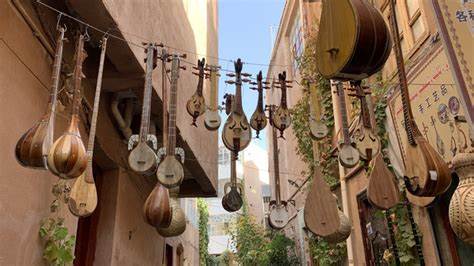Xinjiang National Musical Instrument Maker: Let the sound of the zither continue to be melodious
Following the melodious sound of the zither, the reporter walked into a musical instrument sales shop in Yong'an Town, the 44th Regiment, Tumushuk City, the third division of Xinjiang Production and Construction Corps on the 4th, and the shop owner, Tuson Namaiti, was auditioning for a newly made solo. Seeing someone coming in, he got up and introduced his "baby" enthusiastically.

(The figure is from the network)
In this shop named after Tucson Namaiti, all kinds of musical instruments almost occupy a room. Besides the instruments used for playing, there are also delicate and small musical instrument ornaments.
"I was nurtured by my father when I was young and liked national musical instruments. Because my family was poor, I always maintained my life by maintaining household appliances. Before 1995, I learned the craft of making musical instruments independently, but I didn't know how to decorate the appearance of musical instruments." Tucson Namaiti said that with this problem, in March 1995, he went to Gaotai Folk House Scenic Area in Kashgar to learn the core technology of instrument appearance decoration from old artists.
Tucson Namaiti lives in the third company of Yong'an Town, the 44th Regiment. He is nearly sixty years old and still has many scars on his hands to learn how to make musical instruments. More than 20 years later, this old man with callous hands and white temples has become a well-known craftsman of national musical instruments.
In 2019, Yong'an Town of the 44th Regiment built a folk style street in Dongcheng District, Tumushuk City, and provided a three-year rent free shop for the willing Tucson Namaiti.
The original name of Dutar was Dutar. In December 2016, Xinjiang formulated the general standard of the Classification and Terminology of Uygur Musical Instruments, and finally determined its formal name as Dutar.
The traditional Dutal, which looks like a big ladle with a long handle, is composed of a resonance box, a head, a rod, a string axis, a horse and strings. It is mostly made of naturally dried mulberry, apricot or walnut wood.
"Dutar is a little bigger, with 2 threads; Taber is a little smaller, with 5 threads; Satar has 13 threads; and Zhevafu generally has 5-7 threads. The number of threads used by each type of instrument is different, and the sound played is also different." When talking about musical instruments, he always talks about his "special love", Jason Namaiti.
In the studio of Touxun Namaiti, you can not only enjoy the production of exquisite musical instruments with beautiful patterns, but also see the whole process of making musical instruments, and purchase your favorite musical instruments.
It is reported that these purely handmade national musical instruments are sold to Urumqi, Aksu, Awati, Bachu and other places, and musical instrument enthusiasts in the nearby group farms also often come to visit.
"The cultural heritage handed down from the elders is a precious spiritual wealth, and we have a responsibility to pass it on. "I will try my best to cultivate more inheritors," said Thomson Namaiti.
Singing Daolang Mukam, performing Maxi Refu, drinking Musales... Now, in the Ethnic Style Street of Yong'an Town, the 44th Regiment, the sound of the piano and the air have been integrated, and the beautiful music is rippling.
 渝公网安备 50010702504639号
渝公网安备 50010702504639号